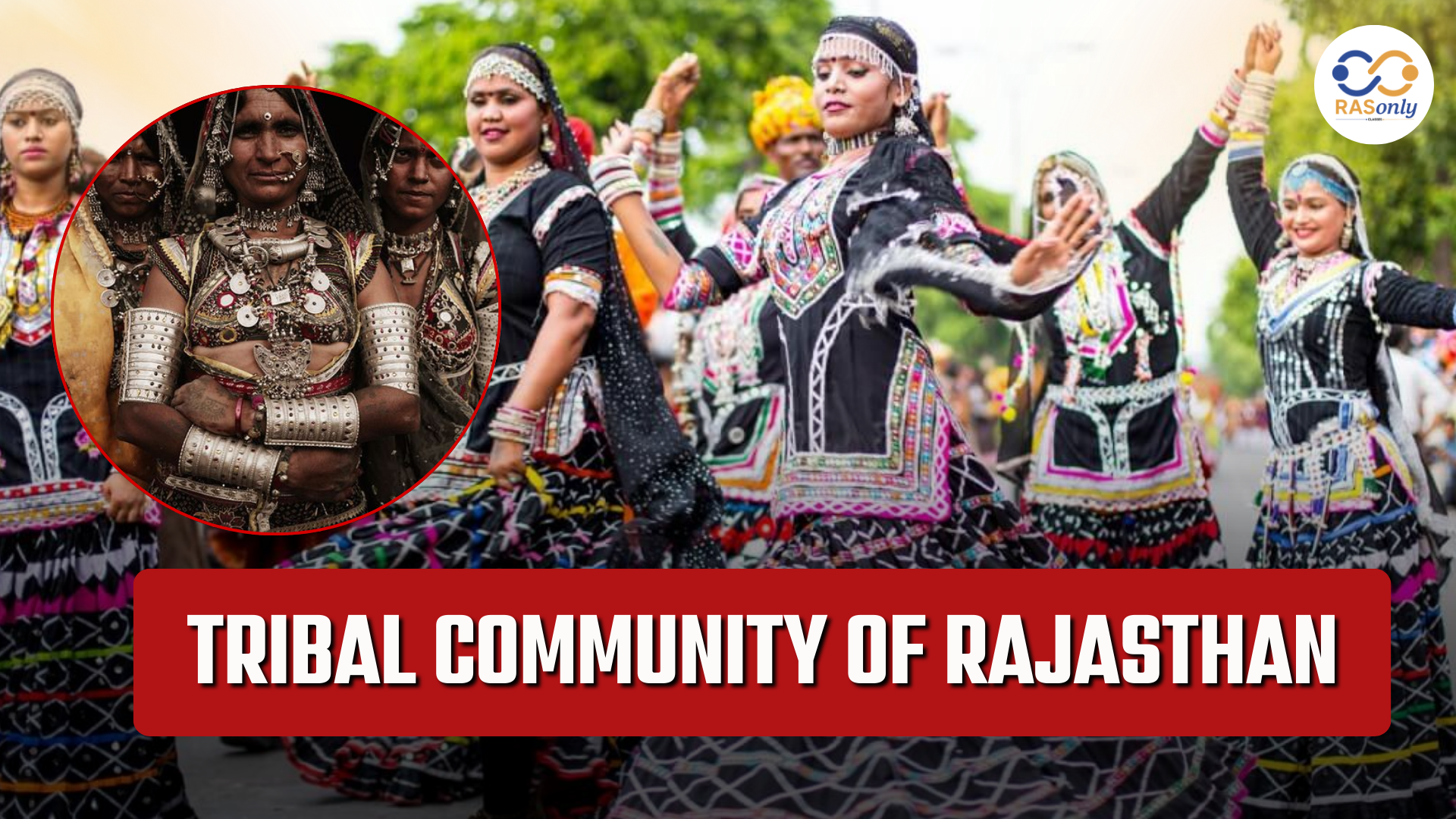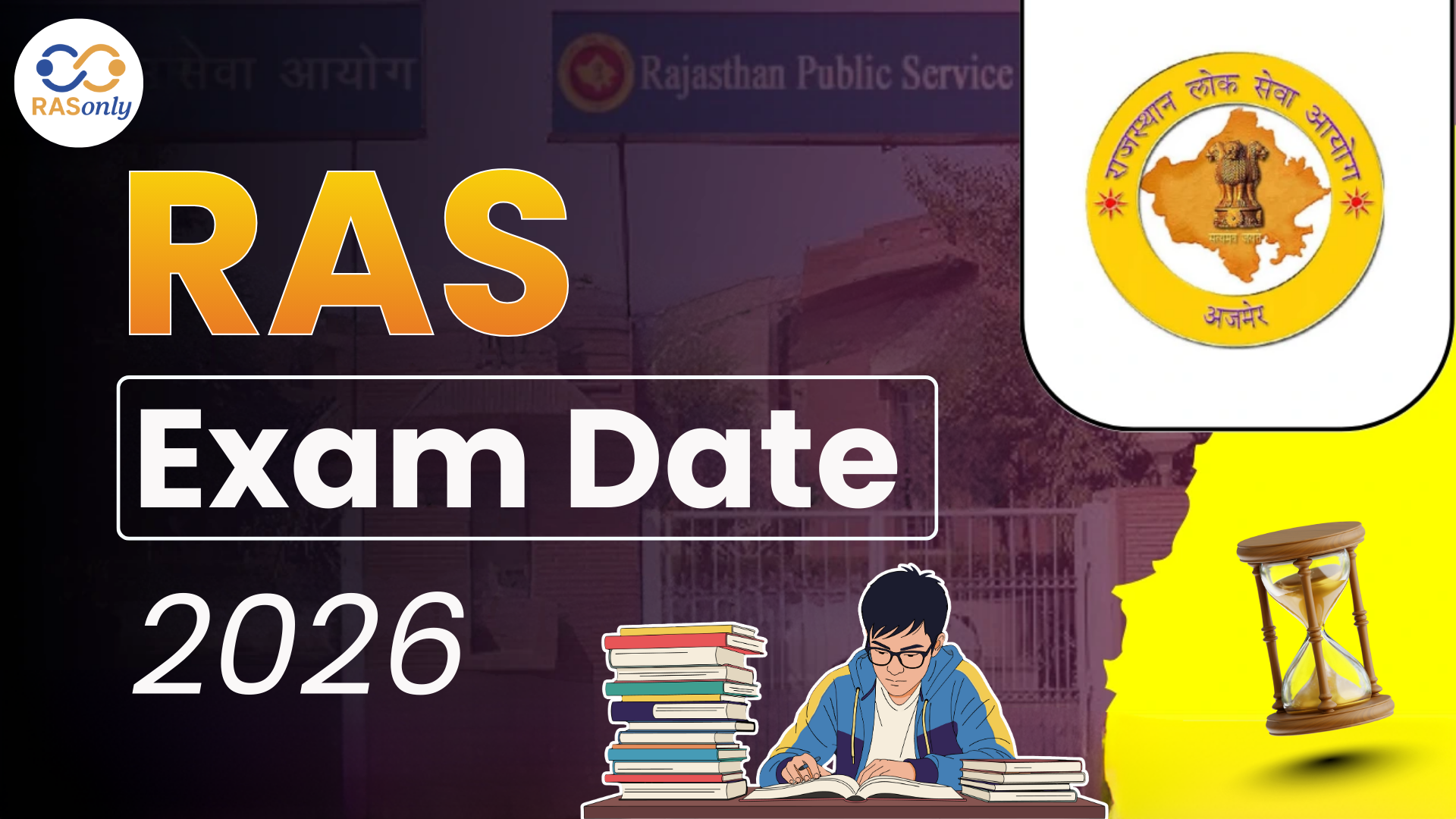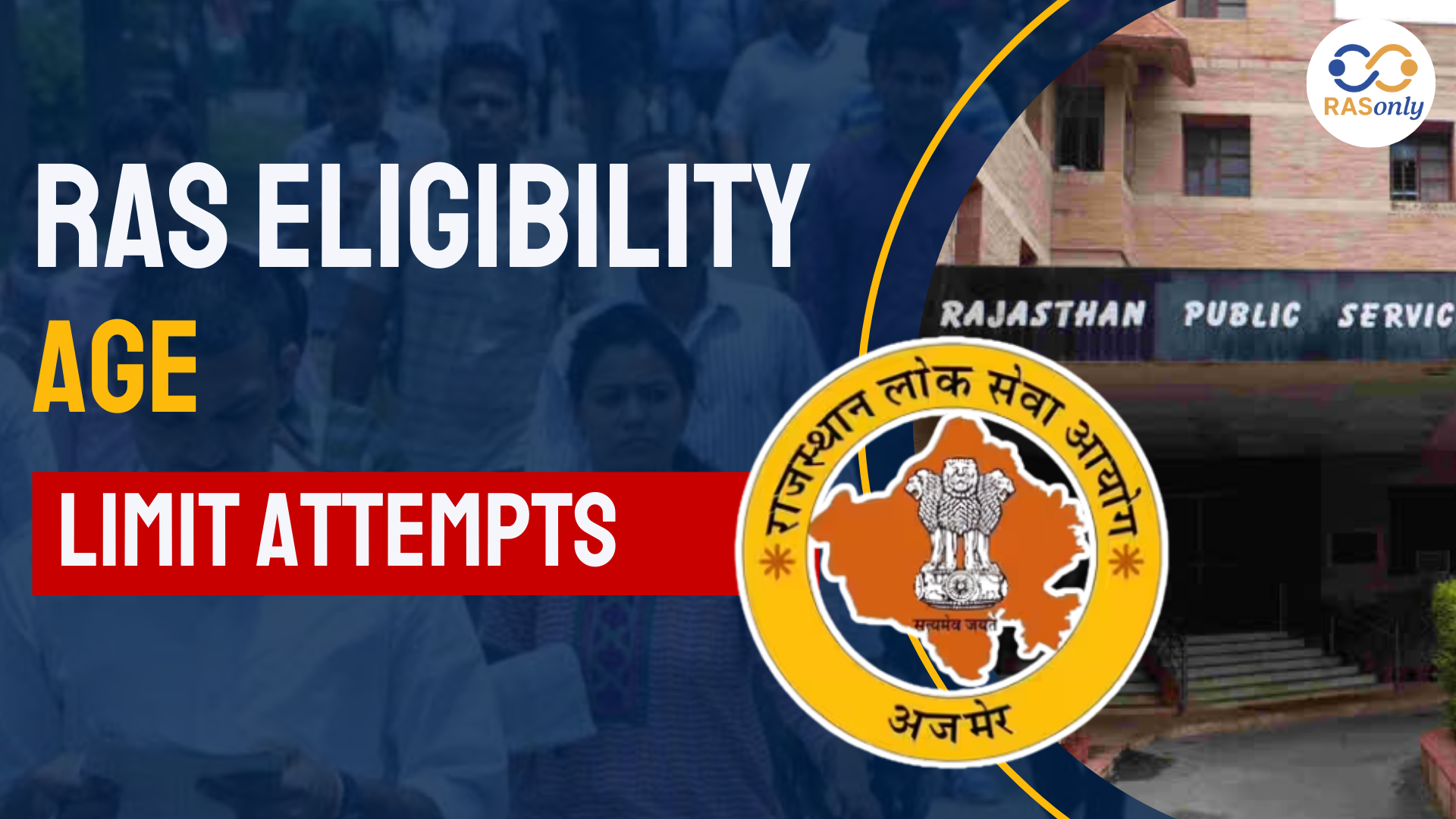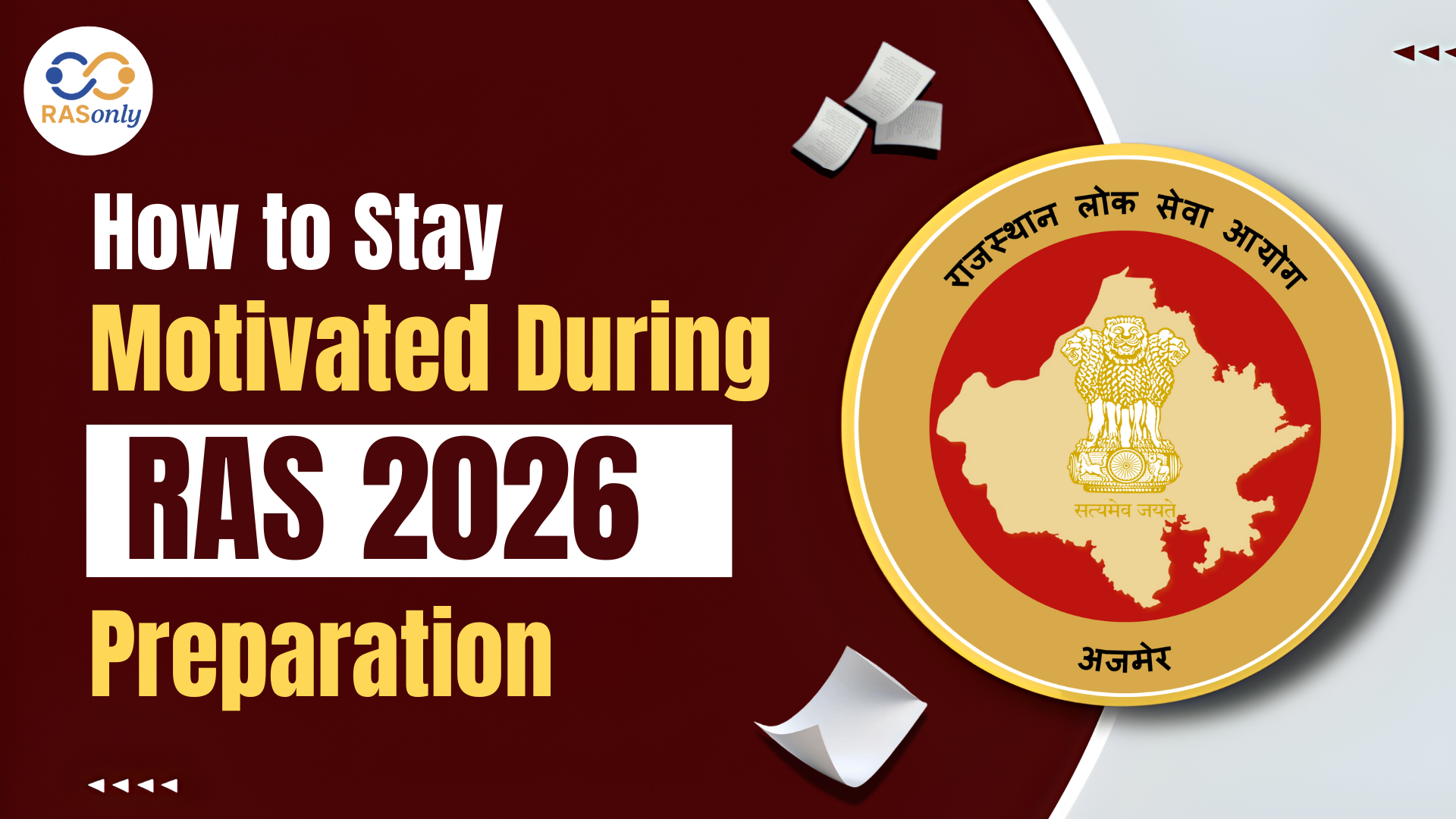RAS Exam Date 2026 for Notification, Prelims, Mains Date
- >
- RAS Preparation Resources
- >
- Tribes of Rajasthan
Tribes of Rajasthan


There are 12 scheduled tribes (this makes nearly 13.5% of the total population of the state) in Rajasthan having various names depending on different parts of the state. The major ones are the Bhils, Meenas, Garasias, and Sahariyas, mostly found in southern Aravalli and southeast regions. In these tribes, people have different cultures, customs, and ecological wisdom and in most of the cases they usually practice agriculture, crafts, and forest-related occupations. They do encounter problems such as poverty, illiteracy and displacement and in response states and central welfare attempts have been made. The tribal development of Rajasthan through government schemes like Tribal Sub-Plan, EMRS and Van Dhan Kendras seek comprehensive tribal development.
Key Highlights for RAS Mains
Tribe definition in India
- According to the Imperial gazetteer of India:
- A tribe is a group of families, who bear one name, use a common dialect, and who inhabit a common territory, or pretend to do so.
- India is a land of a melting pot of tribes and races.
- India has the second-largest number of tribal population in the world after Africa.
- Tribals form 8.9% of the total population of India according to a Census 2011.
Tribal Community nomenclatures
- Adivasis (Indigenous People)
- Means literally the original inhabitants.
- Have different cultures, traditions, languages and reside in ecologically different areas.
- Good spiritual, environmental and cultural relationships of land.
- Scheduled Tribes (STs)
- Article 366(25) in the Constitution defines it.
- Enlisted in Article 342 and notified by the President after consultation with the Governor of respective states.
- STs Essential Features (Lokur Committee, 1965):
- Primitive traits
- Geographical isolation
- Distinct culture
- Aversion of contact with the wider world
- Economic backwardness
Tribe in Rajasthan
- There are a wide variety of tribes in Rajasthan, the proportion of people belonging to Scheduled Tribes constitutes nearly 13.5% (9.24 million as per 2011 Census) of the state population.
- Most of the tribal people can be found in the Aravalli hill area that has forest and biodiversity wealth
Tribal Communities
- 1. Bhils
- Biggest troop in Rajasthan, largely in Banswara, and in archery powerful traditions
- 2. Meenas
- Second biggest, primarily located in the Alwar Karauli area.
- A traditionally agricultural society still working in politics and in government services
- 3. Sahariyas
- They live in Tonk, Kota, Baran, Bundi; they depend on hunting, gathering, and shifting cultivation.
- Tend to become socio-economically marginalized often
Other STs
- The state of Rajasthan has 12 tribes in formal existence.
- Bhil (different sub groups such as Bhil Garasia, Dholi Bhil)
- Mina
- Damor, Damaria
- Dhanka,Tadvi, Tetaria, Valvi
- Garasia (without Rajput Garasia)
- Kathodi/Katkari groups
- Kokna, Kokni, Kukna
- Koli sub-groups
- Naikda, Nyak
- Patelia
- Sahariya is also known as Sehria (or Seharia).
- They are enlisted in detail in official schedules.
Non-Scheduled/Ethnic Groups
- A. Kalbelia
- Folk dance of serpent-like movements of the ancient snake-beating tribe of the Thar Desert.
- Distributed in Pali, Ajmer, Chittorgarh and Udaipur
- B. Mehrat Cheetah
- Community of mixed Hindu-Muslim origins of Rajput descent in Ajmer, Bhilwara, Pali and Rajsamand.
- The famous religious harmony where some of the families worship in both temple and mosque
- C. Bishnoi
- Vaishnava sect was established by Guru Jambheshwar (1485), and has 0.6 and up to 1.5 million members.
- Eco-conscious are following 29 commandments, which cover not only wildlife and forest protection, thus getting them the designation of primary eco-warriors
- D. Vagri (Vaghri / Waghri)
- Hunting of tiger and tree dweller in Aravalli and Gujarat.
- Knowledgeable in guerrilla warfare, members of Shaktism; declared a denotified tribe after being stripped of the Criminal Tribes Act
- E. Kachhwaha
- Rajput clan having sub-clans as 71 such as Shekhawat, Naruka, Rajawat etc.
- Dominates in northern Rajasthan; once governed Jaipur, Alwar and other princely states
Geographical Distribution
- Aravalli region: Forest cover and terrain mostly dominated by the tribal people.
- Exceptions:
- Sansi and Sahariya clans located in non-forested regions
Cultural Socio-Economic Profile
- The tribal communities are mainly agriculturalists, hunters, and gatherers as well as forest dependent life-styles.
- Integration into the mainstream culture with a greater representation in politics and taking up employment in the government.
- There are high numbers of the population who continue to live in poverty, deprived of resources, and are socially excluded.
How Tribes Differ from Mainstream Societ
| Aspect | Tribal Communities | Mainstream Society |
|---|---|---|
| Culture | Unique dialects, rituals, art, and customs | Standardized cultural patterns |
| Economy | Forest-based, subsistence farming, handicrafts | Market-oriented professions |
| Governance | Kinship and clan-based traditional systems | Formal legal and political institutions |
| Land Relationship | Deep spiritual & ecological link with land & nature | Viewed as economic/commercial resource |
Constitutional and Institutional Means
1. Ministry of Tribal Affairs (MoTA)
- It was established in 1999 to protect and foster welfare of STs.
- Functions:
- Formulating policies
- Running central tribal schemes of welfare
- Protecting tribal rights, land and culture
2. National Commission of Scheduled Tribes (NCST)
- Created through Article 338A (Constitutional Amendment Act, 89 th -2003).
- Roles:
- Explores ST complaints
- Monitor schemes implementation
- Suggestions on affirmative action policies
Major Tribal Welfare Schemes & Programs
| Scheme/Program | Objective |
|---|---|
| Special Central Assistance (SCA) to TSP | Financial aid for ST area development |
| Eklavya Model Residential Schools (EMRS) | Quality education to tribal students |
| Van Dhan Vikas Kendras | Value addition & market linkage to forest produce |
| Pradhan Mantri Janjati Adivasi Nyaya Maha Abhiyan (PM JANMAN) | Holistic tribal welfare in remote areas |
| National Education Society for Tribal Students (NESTS) | Residential schools & hostels for STs |
Problems among the Tribal Communities
- Eviction as a result of dam constructions, mining, and nature policies of forests
- Destruction of language and culture
- Medicine and diet
- Alienation of Land and illiteracy
- Non participation in policy process and modern economy
Conclusion
Tribals are the custodians or the repositories of ecological knowledge, diversity of culture and knowledge. On one hand they have contributed so much to the Indian heritage and building of the country and on the other hand they are socio-economically vulnerable. The most important way to empower these communities is to assure them of comprehensive development, constitutional safety, and honor of the tribal identity and autonomy
Post Category
- RAS Salary
- Result
- RAS Admit Card
- RAS Job
- RAS Cutoff
- Preparation Tips
- RAS Answer Key
- RAS Exam Analysis
- RAS Syllabus
- RAS Previous Year Papers
- RPSC RAS Exam Pattern
- RAS Interview
- RAS Mains Exam Date
- RAS Vacancy
- RAS Test Series
- RAS Best Books
- RAS Preparation Resources
- RAS Coaching Centre
- History
- Polity
- Geography
- Economics
- Science
- Art and Culture
- RPSC RAS Application Form
- RPSC RAS Notification
RASonly Interview Guidance Program

Mr. Ashok Jain
Ex-Chief Secretary Govt of Rajasthan
- IAS officer of the 1981 batch, Rajasthan cadre.
- Passionate about mentoring the next generation of RAS officers with real-world insights.
- Got retired in Dec 2017 from the post of Chief Secretary of the state of Rajasthan.

Mr. Guru Charan Rai
Ex-ASP / SP in Jaisalmer
- Guru Charan Rai, IPS (Retd), retired as Inspector General of Police (Security), Rajasthan, Jaipur in 2017.
- Served as ASP and SP in Jaisalmer, Nagaur, Sri Ganganagar, Sawai Madhopur, Dausa, Sikar, and Karauli.
- He also held key positions as DIGP and IGP in the Law and Order division.

Mr. Rakesh Verma
Ex-IAS Officer, B.Tech, MBA, and M.A. (Economics)
- IAS officer of the 1981 batch and retired in Chief Secretary Rank.
- Civil servant of high repute and vast experience.
- Has been teaching UPSC CSE subjects for the last six years.
Related Post
👉🏻 Register Today to Join Classes! 👍🏻
- Team RASOnly -
🎯 Benefits of RASOnly Coaching:
- ✅ 1:1 Mentorship with RAS Officers
- ✅ Experienced and Expert Faculty
- ✅ Free Library Access
- ✅ Daily Minimum 4 Hours Must
- ✅ Comprehensive Study Material
- ✅ Regular Tests & Performance Analysis
- ✅ Personalized Guidance & Doubt Solving
- ✅ Online & Offline Class Options
- ✅ Affordable Fees with Quality Education
Key Highlights:
- 👉🏻 3-Day Refund Policy
- 👉🏻 New Batch Starting from 04 August
- 👉🏻 Registration Amount: Only ₹1000





